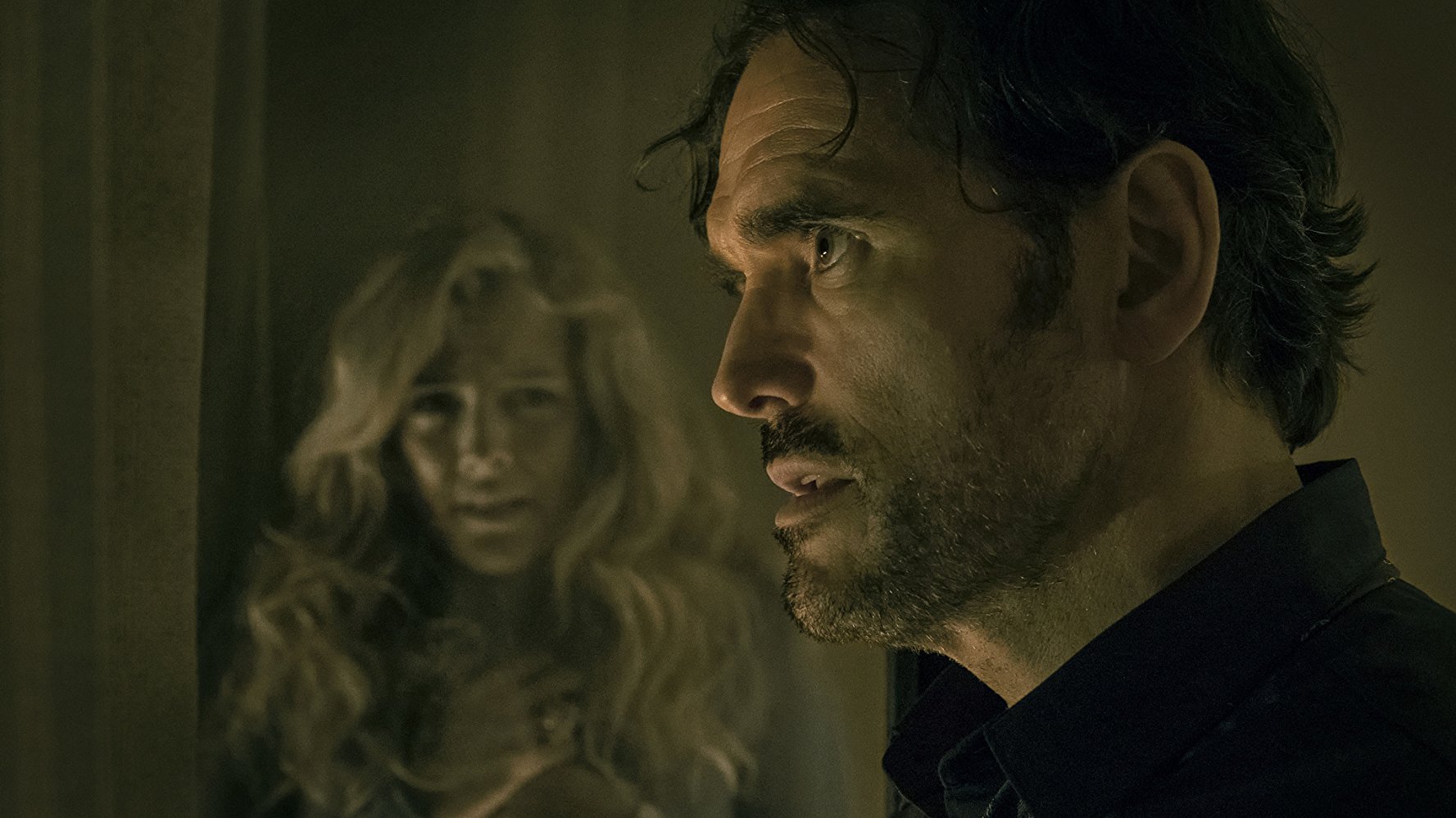Today’s most notorious event at the Cannes Film Festival, as anticipated from Day One, was the out-of-competition early morning press screening of Danish director Lars von Trier’s “The House That Jack Built,” starring Matt Dillon and Bruno Ganz, with brief appearances by Uma Thurman and Riley Keough. A well-known grandstanding provocateur, von Trier is again being welcomed into the elite fold of Cannes artistes after a seven-year hiatus in disgrace.
His calculated bad-boy history at this festival goes away back to his 1991 appearance with “Europa,” when he spurned the jury’s technical prize, calling jury president Roman Polanski a midget. Later that night, two American critic friends came upon him symbolically setting fire to his award on the beach for the benefit of a Danish TV crew.
Nevertheless, von Trier is normally a director to be taken seriously. Films including “Breaking the Waves,” “Antichrist,” and “Nymphomaniac I and II” have challenged conventional thinking about the connection between body and soul, and between pleasure and pain. That said, the 175-minute “The House That Jack Built” comes off as a pretentious emperor’s-new-clothes stunt of a film, with von Trier cheekily testing just how much violation his audience is willing to accept.
Jack (Dillon) is a self-identified serial killer, who is followed over the film’s five episodes, which involve the torture and murder primarily of women, plus two children and the occasional mutilation. A running narration on the soundtrack involves Jack in conversation with Verge (Ganz), a character who could be assumed to be a therapist, judging by the thrust of the dialogue, but who is ultimately revealed to be something more sinister.
For three-quarters of the running time, “The House That Jack Built” is a clunky rambling film with a homemade look. The whole point seems to be von Trier’s relish of the details of the grisly murders of women, an exercise in pure savagery, with Jack later storing up the corpses in a walk-in freezer and sometimes posing them for photos.
Inserted into the narrative of the murderer’s adventures in gratuitous violence are ponderous asides in the form of art reproductions, animation, diagrams, and text, as if reflecting upon Jack’s malformed psyche within the greater scope of art, religion, and world history. There’s even a YouTube clip of pianist Glenn Gould playing Bach like a madman.
Von Trier increasingly aims for the metaphysical, but at its center his film contains one small and sniveling statement, an ironic aggrieved cry that cuts through the bogus intellectualism of “The House That Jack Built” to reveal the glaring foundation of this film. After verbally abusing a buxom blonde, he mutilates and kills her, whining to Verge, “Why is it always the man’s fault? Women are always victims … to be born male is to be born guilty.” “Why are they [women] always so stupid?” commiserates Verge.

As the afternoon crowds walked the red carpet for the premiere of French competition entry “At War” by Stéphane Brizé (“The Measure of a Man”), rugged star Vincent Lindon, his face ruddy with sunburn, greeted scores of the uninvited and mostly older female fans who hung over the metal fencing as far as they dared. Lindon worked the line with impressive good will, clasping each woman’s hands in his, giving the double kiss on delighted cheeks, and signing autographs. Unlike “The Measure of a Man,” which deservedly won him Best Actor in Cannes in 2015, “At War” affords little chance for an affecting performance.
“At War” is a dramatization of a labor dispute involving a German-owned French auto industry factory that has announced a shutdown that will lay off all 1,100 workers. The point is made early on that it is the only major industry in an economically depressed region, and that most of the people laid off will never find work again. A company executive glibly suggests that the workers simply move somewhere else. Lindon plays Laurent, a forceful but otherwise undistinguished union spokesperson. He is only one featured actor amid a huge ensemble cast.
Scene after scene involves the chaotic movement of throngs of workers, including an attempt to storm the corporate offices, where armed police with plastic shields push back, many demonstration in the street, and a rush to occupy the plant. It’s a process film that advances the narrative by way of fictional news reports and contentious union meetings. Director Brizé makes only the faintest gesture to individualize Laurent, with brief cuts to a Skype with an adult daughter expecting his first grandchild. The French appear to have a considerable appetite for this kind of mass-action film about working class struggle, but tedious and relatively abstract “At War” won’t likely find an audience in North America.

Modestly bringing up the rear of the competition in terms of its likely contender status for the Palme d’Or, is the Japanese film “Asako I & II” by Ryusuke Hamaguchi. The director’s previous feature “Happy Hour,” aka “Senses,” a more than five-hour opus focused on the love lives of four longtime female friends, had put its emphasis on camaraderie. “Asako I & II” is a pleasant but slight doppelgänger love story that also utilizes the confidences exchanged among friends, especially female friends, to both advance and complicate a romance involving one woman and the two look-alike men of her life.
The film is more of a droll, low-key comedy of manners than a love story. For Asako (Erika Karata) and Baku (Masahiro Higashide), it’s love at first sight, with the exchange of a euphoric first kiss, and a wittily posed embrace on the pavement following a motor scooter accident. Asako’s best friend Rio, who has known Baku since childhood, warns that he’s flighty. Mid-affair, Baku takes off, but two years later in another city, Asako meets his exact double, Ryohei (also Higashide). By contrast, Ryohei is stable and loving, a hard-working young executive in a sake distillery, and they settle into contented domesticity.
With marriage to Ryohei on the horizon, Asako learns that Baku is now a male supermodel whose ads and TV commercials are everywhere. Long-buried feelings come to the surface. Once Baku reappears, the pace of the two-hour film picks up, and director Hamaguchi brings a game-like quality to the mirror-image chase after the illusion of love, which begins to feel like a teen fantasy.












